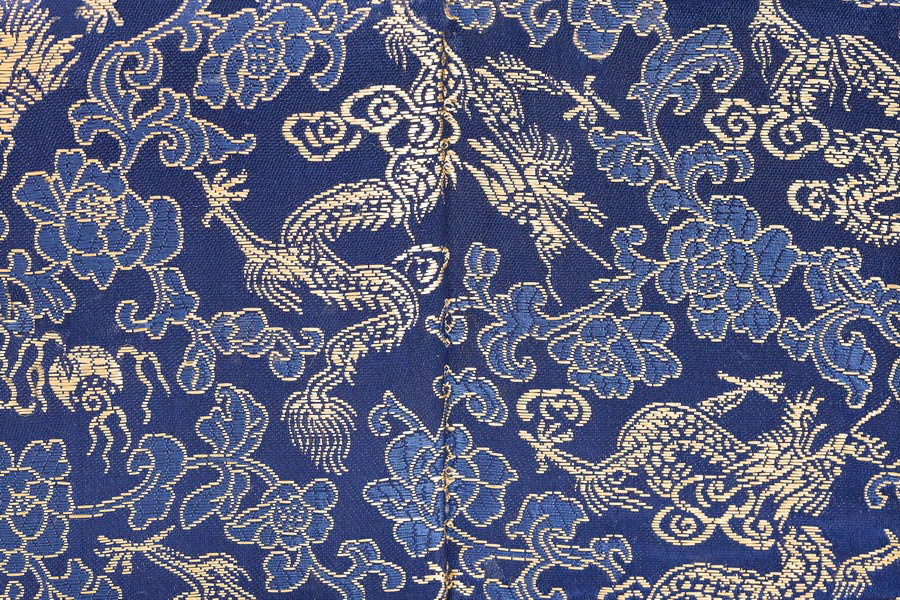
The soldiers of Alexander the Great were the first Europeans to have seen magnificent silks with their own eyes. Under Alexander the Great silk gained popularity in Rome where they paid for it in pure gold. The appearance of Caesar wearing silk tunica was sensational. From that day on wearing clothes made from Chinese silk became customary for noble society in Rome.
For many centuries silk was considered luxury, the most precious commodity – it played the role of money, it was used for rendering tribute, and in commercial transactions.
In Byzantium, for example, silk was equal to gold and precious stones.
In Sogdiana a horse could cost as much as ten length of silk. You could pay in silk for the work done, for upkeep of mercenaries; it was even used as a bribe to avoid punishment for a crime. Civil and military officials, ambassadors of foreign states were often paid salary in silk rolls. You could get allies, mercenaries, any goods, slaves if you had enough silk. It was an important argument in diplomacy: the wonder fabric was used to cajole governors of other countries. It could start wars and end them. Silk became the symbol of power and riches. China actively sold the precious fabric worldwide using the Silk Road. Because of al reasons mentioned above Chinese carefully preserved the secret of silk manufacture. The rest of the world did their best to solve the mystery.
There is a well-known legend about how precious silk got to Hotan (now Xinjiang Uyghur autonomous district). The local ruler was doing his best to get hold of the longed-for material. Finally, he decided to cheat and woo a Chinese princess. When the consent was granted, the messenger of Hotan ruler whispered the princess that she would not be able to wear beautiful silk clothes in the homeland of her future spouse since there was no refined silk there and she needed to bring eggs of silkworms and mulberry tree seeds with her. She did that by hiding eggs in her intricate hairdo, which the guards had no right to search, and mixing the seeds with every possible herbs and medicines in her luggage.
One of the informal versions attributes the theft of sericulture secrets to two monks who were sent to China with the secret mission by Emperor Justinian in 550. The spies were lucky to smuggle silkworm eggs in a hollow bamboo cane. Soon afterwards silk production started in the vicinities of Constantinople. The secret heavily guarded for 3,000 years was uncovered.
In the 5th century silk-weaving mills appeared to Alexandria (Egypt). The manufacture of silk fabrics in Persia had begun even earlier under Sassanid shah Shapur II (309-379) who hired for that purpose skilful weavers from Mesopotamia and Syria.
The beginning of silk farming in the west of the Central Asia is usually dated 5th -6thcenturies. However, judging by the finds of silk fabric of local make in Kampyr-tepa (Northern Bactria), dated second half of the 2nd century - beginning of the 3rd century, it is quite possible that it had appeared there much earlier. In the 6th century in Sogdiana was formed one of the biggest centers of sericulture in the East. Silkworm breeding in Transcaucasia started in the 7th century.
In the Middle Ages after the 4th crusade (1203-1204) silkworm eggs were brought from Constantinople to Venice. Since then silk manufacture successfully developed in Italy having become one of the main industries in Venice (13th century), Genoa and Florence (14th century), Milan (15th century) etc. In the 14th century silk farming started in the south of France and in 1596 sericulture came to Russia.
In the 13th century silk farming in Western Europe, especially in Italy and France, turned into well developed industry.
However, even after Europeans had learnt to breed silkworms, the most silk was still imported from China. For a long time the legendary fabric was worth its weight in gold and only rich could afford to buy it.
It is worth mentioning that in the 16th century France surpassed China in silk manufacturing. In the 19th century the first place was won by Japan that exported the most silk in the world. Nevertheless, China has managed to regain the leadership. Its market share is over 50% of world’s silkworm cultivation volume.

